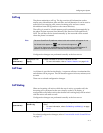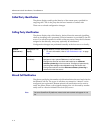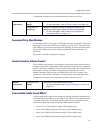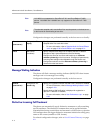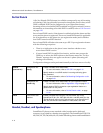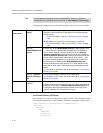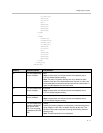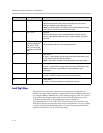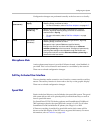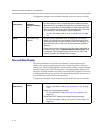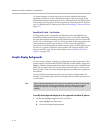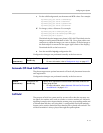
Configuring Your System
4 - 11
<ct>1001</ct>
<sd>1</sd>
<rt>1</rt>
<dc/>
<ad>0</ad>
<ar>0</ar>
<bw>0</bw>
<bb>0</bb>
</item>
...
<item>
<lb>Dr</lb>
<ln>Smith</ln>
<fn>Bill</fn>
<ct>1003</ct>
<sd>3</sd>
<rt>3</rt>
<dc/>
<ad>0</ad>
<ar>0</ar>
<bw>0</bw>
<bb>0</bb>
</item>
</item_list>
</directory>
Element Permitted Values Interpretation
lb UTF-8 encoded string
of up to 40 bytes
label
Note: In some cases, this will be less than 40 characters due to
UTF-8’s variable length encoding.
Note: The label of a contact directory item is by default the label
attribute of the item. If the label attribute does not exist or is Null, then
the concatenation of first name and last name will be used as label. A
space is added between first and last names.
fn UTF-8 encoded string
of up to 40 bytes
first name
Note: In some cases, this will be less than 40 characters due to
UTF-8’s variable length encoding.
ln UTF-8 encoded string
of up to 40 bytes
last name
Note: In some cases, this will be less than 40 characters due to
UTF-8’s variable length encoding.
ct UTF-8 encoded string
containing digits (the
user part of a SIP
URL) or a string that
constitutes a valid SIP
URL
contact
Used by the phone to address a remote party in the same way that a
string of digits or a SIP URL are dialed manually by the user. This
element is also used to associate incoming callers with a particular
directory entry.
Note: This field cannot be null or duplicated.



